Since all archaeological objects are mute, they lend themselves to multiple interpretations. Many different stories from different points of view can be told about a single object. The Cyrus Cylinder is no exception. This iconic object discovered in Iraq in 1879, legally but unethically was exported from that country and has been kept in the British Museum since then.
This cylinder has been in Iran, the country that was once ruled over by its creator king Cyrus, twice and each time for promoting a certain political agenda. The first time the Cyrus Cylinder travelled to Iran was in 1971 during the magnificent but ill-fated celebration of the supposed 2500th anniversary of the founding of the Achaemenid dynasty. The last Shah of Iran sought to emphasize the glories of the pre-Islamic Persian civilization and to identify his regime with the ancient Persian Achaemenid dynasty (539-330 BCE). Before that, in 1968, the Shah opened the first United Nations Conference on Human Rights in Tehran by saying that the Cyrus Cylinder was the precursor to the modern Universal Declaration of Human Rights. The Cyrus Cylinder was thus a key symbol of the Shah's political ideology. The discourse that the last Shah of Iran created around this archaeological object, has heavily dominated the interpretations of it until now.
The second time the Cyrus Cylinder came to Iran was in 2010, amidst all the political tensions after the 2009 election. This time during a colorful event, president Ahmadinejad gave a "Chafieh" a symbolic icon of resistance worn by the Iranian soldiers during the Iran-Iraq war to the actor who was impersonating king Cyrus. Iran's Cultural Heritage Organization was at the most chaotic state during this year, governed by the most unprofessional and corrupt directors ever, where many valuable archaeological sites and objects were regularly destroyed and neglected. However Ahmadinejad's administration boasted about the success of acquiring this symbolic object on a loan from the British Museum and displaying it for the public in Tehran for four months.
Now on tour in five major American cities, the launch event of "the Cyrus Cylinder U.S. tour" took place at the Smithsonian's Sackler Galley in Washington, D.C., on March 5th. This launch event featured a live, on-stage conversation between CNN's Christiane Amanpour and the British Museum's director Neil MacGregor.
Neil MacGregor talked of the cylinder as a significant 2600-year-old symbol of freedom and as an object with many meanings that provides a link to the past. He emphasized that this object is "more important now than ever" for the light it sheds on Iranian history. Although he himself has cautioned us before that: "...the Cyrus cylinder is in no real sense an Iranian document: it is part of a much larger history of the ancient Near East."
MacGregor's interpretation of the invasion of the Achaemenid king Cyrus to Babylon as "another" "Iran-Iraq" war in 539 B.C. and his peaceful "regime change" in Babylon is projecting fantasy and is a far extension of imagination. There is no doubt that these concepts of "nation-states," "peaceful regime change," even "Human Rights" and "freedom" were nothing but alien concepts to the contemporaries of Cyrus and Cyrus himself.
MacGregor's narrative and interpretation of Cyrus's peaceful conquest of Babylon pushes this historical incident back in time and makes it so distant, as if he is trying to remind Iranians of what a tolerant and civilized people we "used to be." However, this narrative ironically emphasizes continuity with the present -- and yet this continuity is only visible through the lens of Western civilization. In this narrative, Western civilization is the true heir of Cyrus's great legacy of tolerance and respect for Human Rights. In this story, Cyrus remained a model for European kings and princes and then the American Founding Fathers, as well as the American presidents throughout the remainder of history, while Iranians got divorced from their glorious past in an implied devolution from tolerance into intolerance and democracy into despotism.
This narrative presents the past as distant, yet at the same time it draws on the notion of familiarity by establishing a connection between a past practice and one known in the present. In this case, the similarity is drawn between these two incidences: Cyrus setting the "captive communities" in Babylon free and the 1917 Balfour Declaration of the establishment of the state of Israel.
Neil MacGregor has commented before that:
Comparison by scholars in the British Museum [of the Cyrus Cylinder] with other similar texts, however, showed that rulers in ancient Iraq had been making comparable declarations upon succeeding to the [Babylonian] throne for two millennia before Cyrus [...] it is one of the museum's tasks to resist the narrowing of the object's meaning and its appropriation to one political agenda.
However, it seems that the British museum's "official narrative" of this object as its main patron and "owner" pursues a clear political agenda.
The director of the British Museum is traveling with the Cylinder and educating the public about it. His story has a heavy emphasis on the biblical interpretations of this archaeological object. In a room adjacent to the Cylinder at the exhibition -- the walls are covered with quotations about Cyrus from Aeschylus to Isaiah to the first Israeli Prime Minister David Ben-Gurion. All these factors, when viewed together, send a very certain message about this object with a limited scope.
There is nothing wrong with using an archaeological object and an old text for a good cause, to spread the message of ethnic and religious tolerance and peaceful coexistence in the unstable and hostile world that we live in today. However, what is most concerning here is the absence of Iranian experts and scholarly voices along with the total absence of mentioning and caring about the pressures which Iranians are now living under. Iranian scholars have provided us with the most professional and trustable translations as well as interpretations of this object. Today this absence of Iranian voices is widespread, as a heavy burden is growing in Iran -- a burden about which most Americans hear very little: U.S.-led crippling sanctions against Iran.
Cyrus the Great, apart from setting people free and declaring religious freedom and tolerance also declares that:
... [I will] never let any of my governors and subordinates look down on or insult them [the people] until I am alive. From now on, till Mazda grants me the kingdom favor, I will impose my monarchy on no nation. Each is free to accept it, and if any one of them rejects it, I never resolve on war to reign. Until I am the king of Iran, Babylon, and the nations of the four directions, I never let anyone oppress any others, and if it occurs, I will take his or her right back and penalize the oppressor.
U.S.-led sanctions, often described as the toughest and most brutal sanctions in the world's history, have been extended to essentially the entire Iranian economy. These sanctions are taking their toll on the lives of countless innocent Iranians. This is real oppression -- the kind of oppression that Cyrus the Great rejected and condemned.
The story of the Cyrus Cylinder travelling the world and being interpreted through a certain point of view by powerful white men is very much a continuation of the fundamentally colonialist and paternalistic nature of Near Eastern archaeology. After 150 years of archaeological exploitation of the ancient Near East, it is time to set a new trend through the inclusion of the voices of multiple interest groups.
